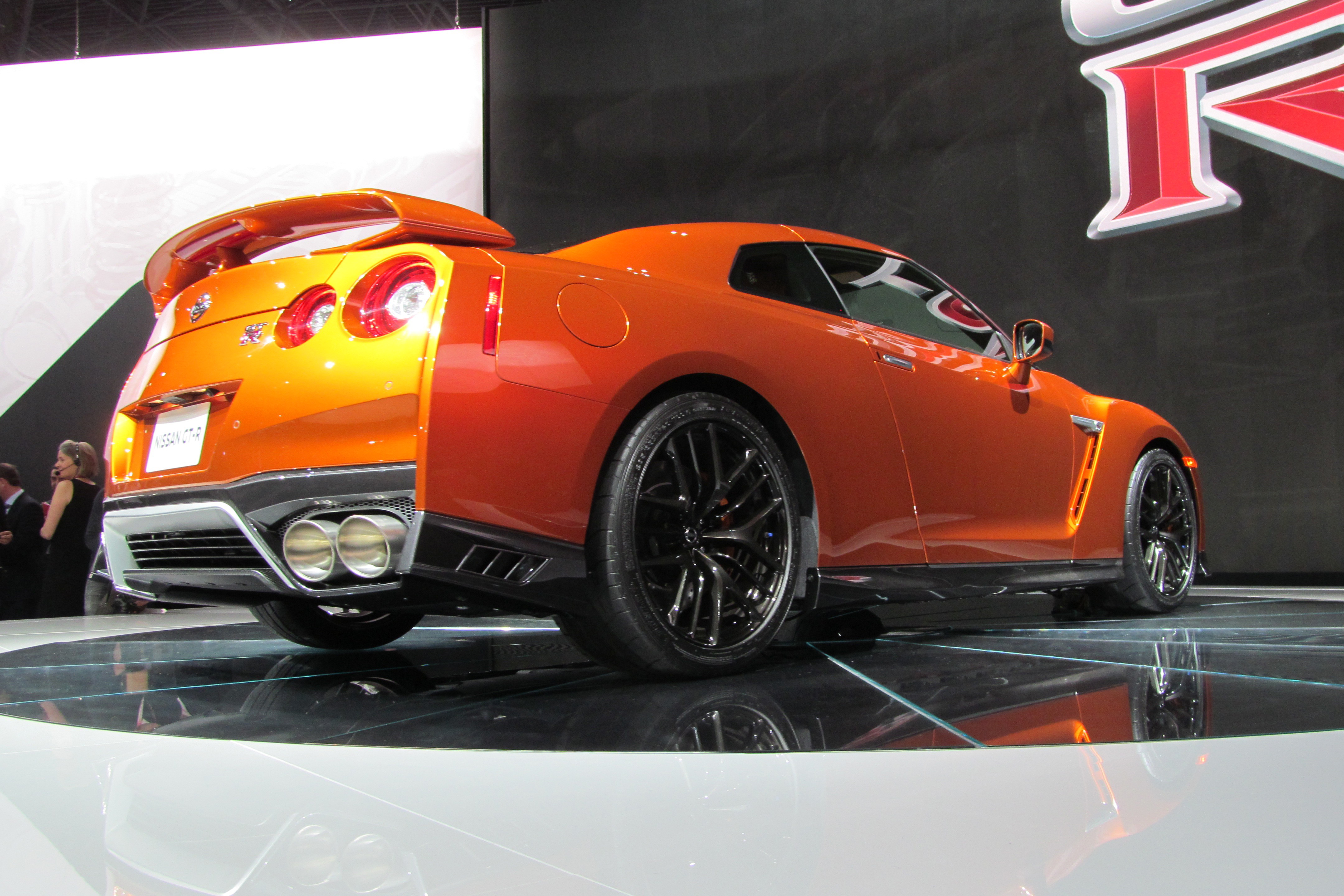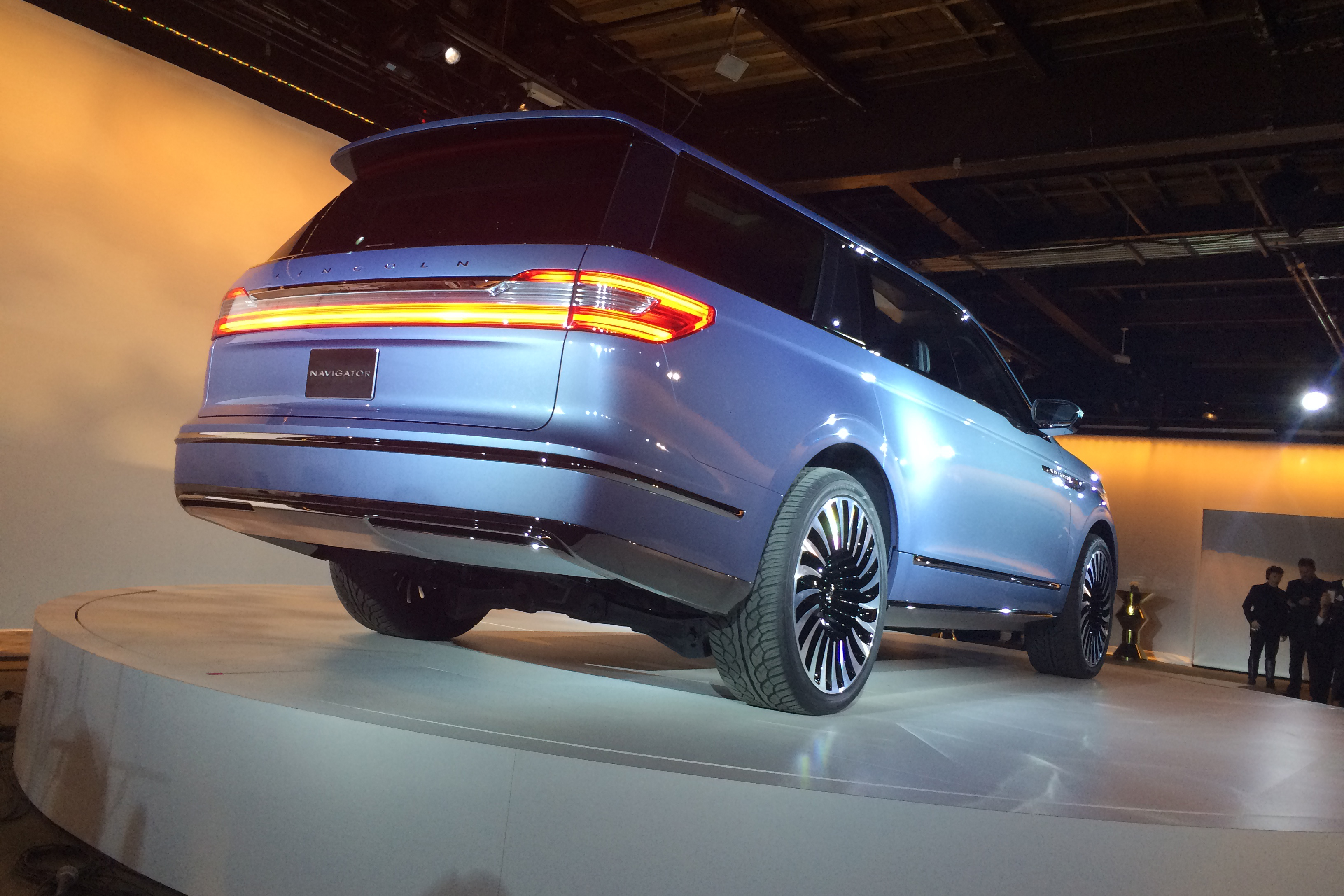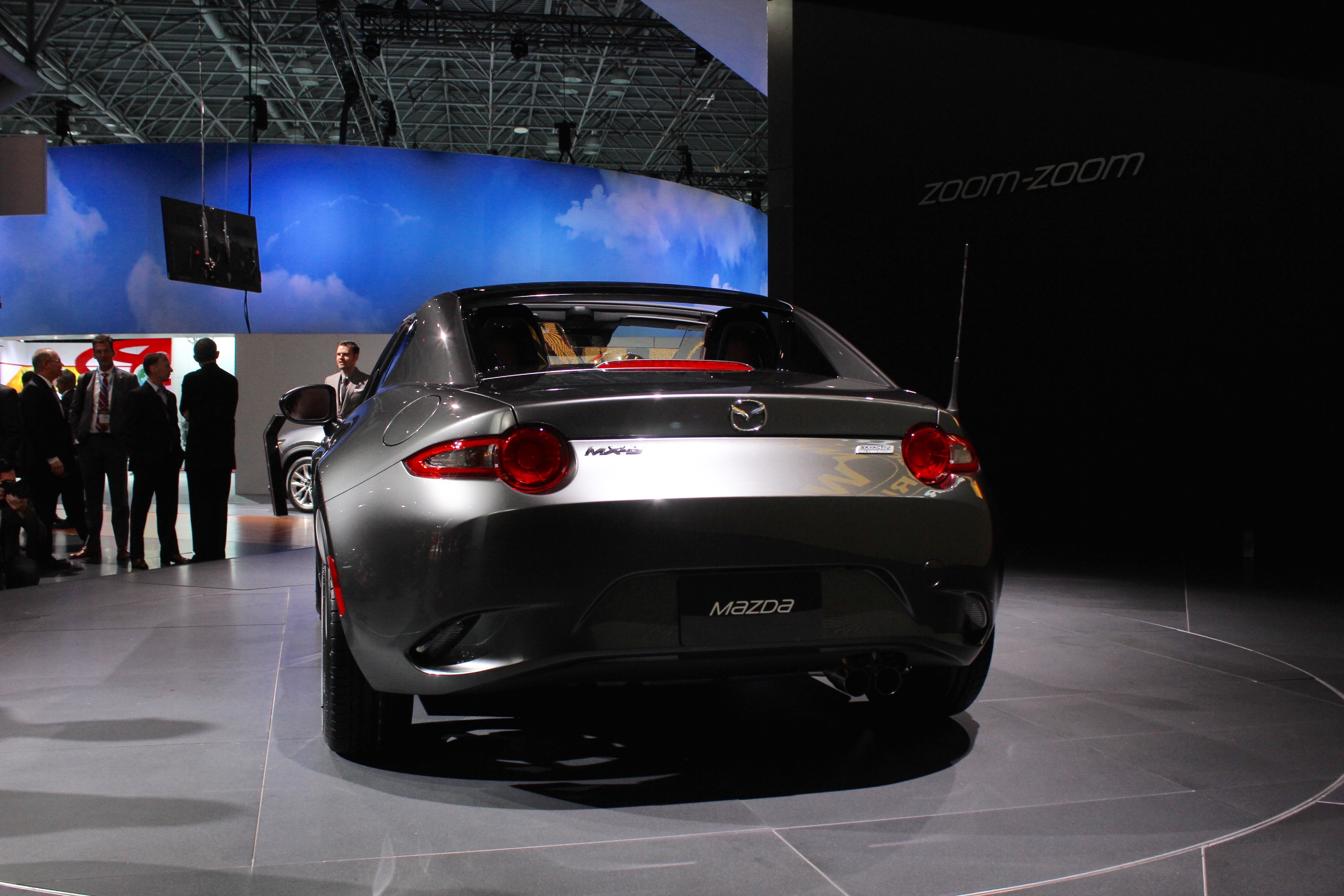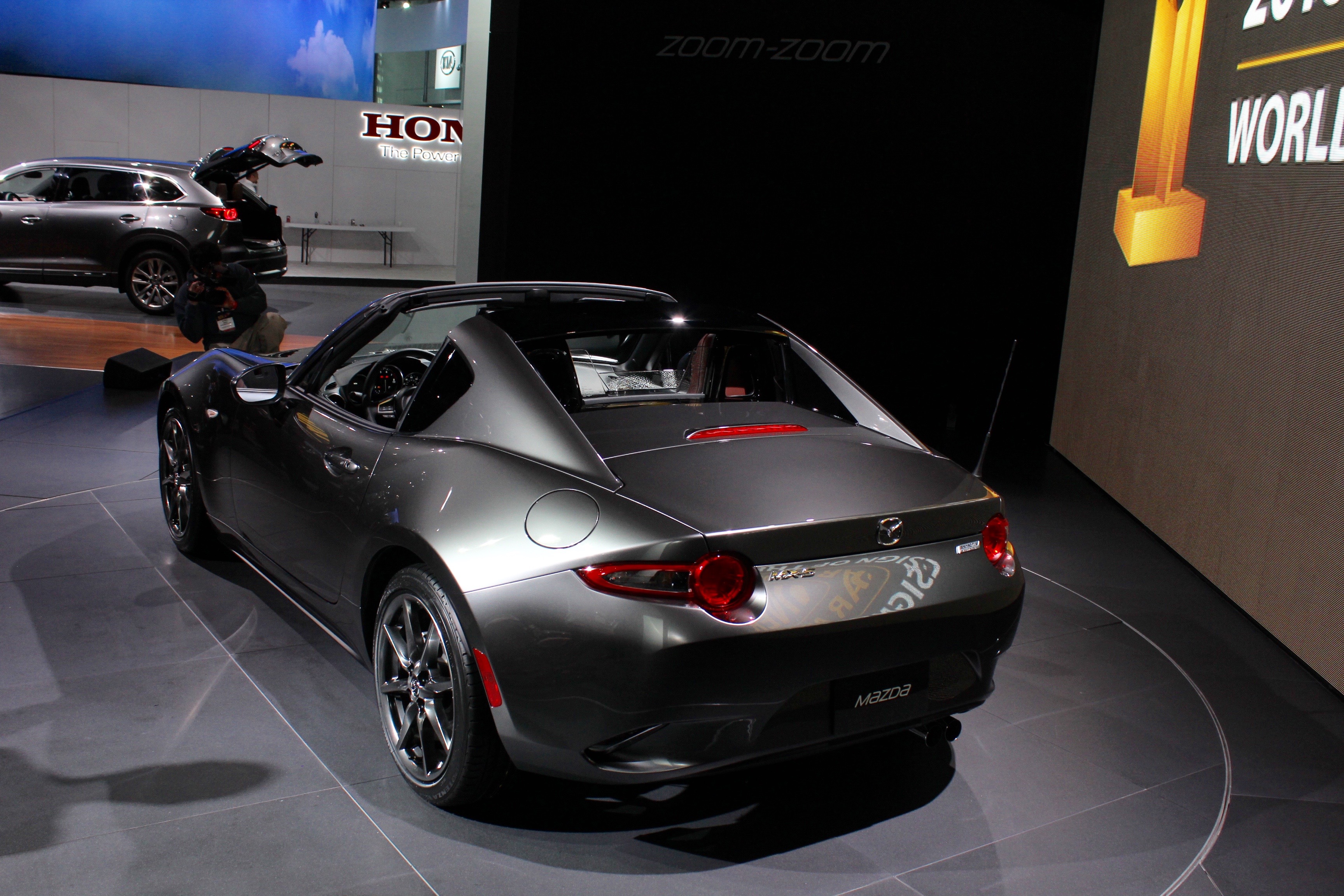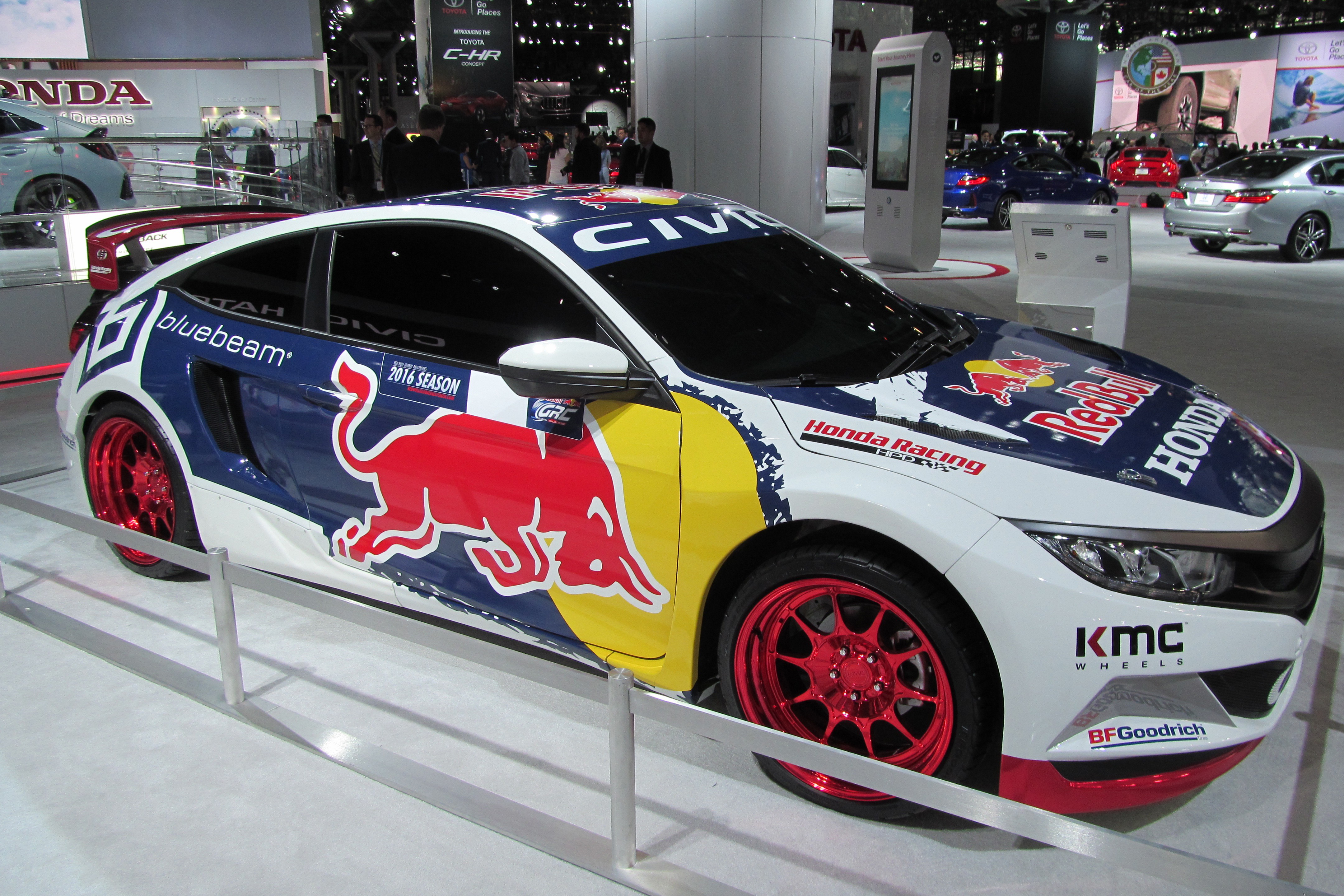2017 Chevrolet Camaro ZL1
Chevrolet’s new Camaro SS is receiving praise for its Cadillac ATS-derived chassis, updated interior, and 6.2-liter V8 engine, but there’s always room for improvement in the form of the 2017 Camaro ZL1. Borrowing the Corvette Z06’s 6.2-liter supercharged V8, an all-new engine for the Camaro, the ZL1 makes 640 horsepower and 640 pound-feet of torque. Both the standard six-speed manual gearbox and a new 10-speed automatic will be available to match the new powertrain. Standard is Chevrolet’s Magnetic Ride suspension, an electronic limited-slip differential, Driver Mode Selector, a dual-stage exhaust, launch control, and Performance Traction Management.
Visually, the 2017 ZL1 will be distinguished by a lower grille opening for greater airflow, a new “flow-tie” open bowtie insignia, an updated hood with a carbon fiber insert and heat extractor, a larger front splitter, unique rockers, a wing-style rear spoiler, and wider front fenders. Inside, the ZL1 comes equipped with Recaro front seats, a suede flat-bottom steering wheel and shift knob, and available Performance Data Recorder.
At 200 pounds less than the 2015 model, and with 60 more horsepower and 80 more lb-ft of torque on tap, the new ZL1 has a significantly improved power-to-weight ratio. The 2017 Camaro ZL1 goes on sale late this year, and I can’t wait to find out how it has improved upon its predecessor.
2017 Nissan GT-R
The GT-R as we know it has been on sale for almost a decade now, and before the R35 generation goes quietly into that dark night, Nissan has tweaked its world-beating supercar for the 2017 model year.
The Japanese super coupe has been updated regularly since it was first introduced into 2007, but this round of changes will be the most significant yet. For 2017, Nissan added a new grille that incorporates the company “V-motion” shape, a new hood, front bumpers, and front lip spoiler. The side skirts were also pushed further out from the bodywork, and at the back, there’s a reshaped fascia that retains the GT-R’s trademark round taillights and quad exhaust.
Under that new hood, the GT-R is still powered by a 3.8-liter twin-turbocharged V6 hand-assembled by craftspeople called Takumi. The engine now makes 565 horsepower and 467 pound-feet of torque, increasing of 20 hp and 4 lb-ft. That power goes to all four wheels through a six-speed dual-clutch transmission. The 2017 GT-R gets a new titanium exhaust system and “active sound enhancement” to either pipe engine noise or noise-cancelling sound waves into the cabin to make it quieter.
The interior gets a major overhaul too. With a focus on luxury, the new dashboard is wrapped in a single piece of Nappa leather. Nissan is also following the trend toward horizontal dashboard layouts, minimizing the center stack to create an airier feel. The 2017 GT-R goes on sale this summer, but even with all these updates, buyers may still hold off for the next generation due in 2020.
2017 Toyota 86
Toyota’s short-lived Scion brand will be deep-sixed before the end of the year, but most of the models that make up its lineup will carry on with a new name and a Toyota emblem on the hood. The first car to make the jump from Scion to Toyota is the FR-S, which will be re-christened 86 for the 2017 model year.
The new name is accompanied by a minor facelift. The Toyota 86 receives newly styled headlights with integrated LED daytime running lights, and a redesigned front bumper with a wider air dam that emphasizes the coupe’s width. Out back, the updates are limited to refreshed LED tail lamps and a subtly re-shaped bumper. The cabin receives soft-touch material on the dashboard and on the door panels, and silver contrast stitching on the seats.
Changes under the hood are minimal – the 86 carries on with a 2.0-liter flat-four engine, though Toyota has bumped its output up to 205 horsepower and 156 pound-feet of torque, increases of merely five horsepower and five pound-feet of torque over the outgoing model.
Rear-wheel drive and an enthusiast-approved six-speed manual transmission come standard, and a six-speed automatic unit with shift paddles is offered at an extra cost. Finally, Toyota has tweaked the suspension to further improve handling, one of the FR-S’s biggest strong points. The 2017 Toyota 86 will land in Toyota showrooms this fall.
Lincoln Navigator Concept
The Tesla Model X has it “Falcon” doors, but Lincoln may have just gone one better. The Navigator concept that debuted this week at the 2016 New York Auto Show has many interesting features but, really, it’s all about those gullwing doors, which certainly won’t make it to production.
Lincoln may have helped invent the giant luxury SUV segment, but the current Navigator is a bit long in the tooth, so the concept’s styling and technology are welcome news. On the outside, the Navigator concept adopts the new Lincoln front end first shown on the Continental. It’s also got the now-obligatory side vents, which are integrated with a crisp line running from the headlights to the taillights. Those taillights wrap around, just like on most recent Lincolns. And instead of running boards, the Navigator concept has steps that descend for easier access to the cavernous cabin.
That interior is more spacious than any production Navigator ever, Lincoln says. Some of the highlights include 30-way adjustable seats, and a “wardrobe management system” in the trunk. The driver gets a digital gauge cluster and center-stack display screens, and there are monitors for each of the rear-seat passengers.
To move the Navigator’s considerable bulk, Lincoln employs a 3.5-liter, twin-turbocharged V6, which produces “more than” 400 horsepower.” It’s likely the same engine already used on the production Continental and MKZ. The Navigator concept won’t go into production as is, but it likely previews a next-generation Navigator that will probably arrive in the next few years.
Genesis New York Concept
The newly crowned Genesis brand revealed its first concept at the 2016 New York Auto Show, and the ultramodern (and aptly-named) New York Concept left the crowd speechless. The brand’s first foray into show car territory, the vehicle’s design is the company’s most progressive yet, but it has real implications for the future of Genesis.
The New York Concept reportedly previews the upcoming G70 luxury sports sedan, one that will eventually lock horns with the likes of the Audi A4, BMW 3 Series, and Mercedes-Benz C-Class. Powering the car is a 2.0-liter hybrid setup with a total output of 242 horsepower and 260 pound-feet of torque, all of which is shuttled to the ground through an eight-speed automatic transmission.
The exterior of the car is fantastic to be sure, but the star of the show is the New York Concept’s futuristic interior. The dashboard and overall curvature looks like something out of I, Robot, and the floating 21-inch touchscreen blends the instrument cluster and center stack together into one modern package. Despite its innovative flair, Genesis says the Concept retains analog instrument dials.
As with most show cars, many of the elements showcased on the New York Concept are unlikely to make it to production, specifically the four-seat setup and dynamic interior styling. Even so, the Genesis brand just gave us one more reason to be excited about the compact luxury space.
2017 Jaguar F-Type SVR
Careful now, the kitten’s claws are sharper than ever. Jaguar has revealed its all-new F-Type SVR ahead of the New York Auto Show and it might be the most exciting cat yet.
The first production Jaguar to be developed by Special Vehicle Operations can accelerate from 0-60 mph in just 3.5 seconds and achieve a top speed of 200 mph (195mph in the convertible) thanks to its 575 horsepower supercharged 5.0-liter V8 and lighter components.
The highlight of the changes is a new Inconel-titanium exhaust system that should produce a lovely sound, and reduce back pressure. Jaguar also says the lightweight materials save 35 pounds. Overall, Jag claims the SVR weighs around 110 pounds less than an F-Type R, and further weight savings are possible with options like carbon-ceramic brakes and a carbon fiber roof. The transmission and all-wheel drive system were also recalibrated to handle the engine’s extra power, and to provide a more lively experience for the driver.
As for the SVR’s styling, its aerodynamic bodywork adds aggression to its gorgeous figure. “SVR is my natural state,” said Ian Callum, Head of Jaguar Design. “Drawing the extreme of design and performance out of a vehicle – that’s what I live for – and the F-Type SVR is just that.”
The range-topping model will start at $125,950 and is guaranteed to catch attention like only the most exclusive sports cars can.
Mazda MX-5 RF
Mazda’s 2016 MX-5, the RF’s soft-top brother, has been named the 2016 World Car of the Year and 2016 World Car Design of the Year at the New York International Auto Show. We loved the standard MX-5, so we certainly find the roadster worthy. That said, we might even be more excited about the RF iteration that debuted in New York this week.
The last generation of Mazda MX-5 Miata featured an optional retractable hardtop, a feature that added practicality and likely increased the little roadster’s appeal. But retractable hardtops are heavy, so surely there was no room for such a frivolous feature in the new, back-to-basics Miata, right? Apparently, there is. On the eve of the 2016 New York York Auto Show, the 2017 Mazda MX-5 Miata RF dropped its hardtop for the first time in public. As with the previous hardtop model, the RF (“retractable fastback”) is meant to broaden the appeal of the Miata by attracting buyers willing to trade some lightness for a little more convenience.
The roof has a nice curve, and terminates in nice flying buttresses at the back. When stowed, it’s more like a 1970s or ’80s targa top than a full convertible, but at least Mazda says there is no sacrifice in trunk space even with the multi-piece metal contraption stowed. Roof operation only takes a push of a button, and can be done at speeds up to 6.2 mph.
Mazda hasn’t said how much weight the RF design will add, but it shouldn’t impact performance too dramatically.
2017 Audi R8 Spyder
Audi has revealed the new 2017 R8 Spyder at the New York Auto Show, and we’re loving it.
The Spyder is all but identical to the second-generation R8 coupe from the rocker panels up to the belt line. Above that, it features a multi-layer cloth soft top that opens or closes at the push of a button in 20 seconds, even at speeds of up to 31 mph. Available in black, brown, or red, the top flows into a pair of fins that give the Spyder a distinctive appearance.
The R8 Spyder is fitted with a virtual cockpit, which is Audi lingo for the digital and fully configurable instrument cluster that was inaugurated a few years ago by the third-generation TT. The 12.3-inch screen can be configured to show a variety of information about the car and its surroundings, including acceleration and lateral forces, as well as navigation directions and connectivity options.
Like the coupe, the R8 Spyder is powered by a naturally aspirated 5.2-liter V10 engine that delivers 540 horsepower and 398 pound-feet of torque. A seven-speed, dual-clutch automatic transmission transfers the ten-cylinder’s grunt to all four wheels via Audi’s quattro all-wheel drive system. The Spyder hits 62 mph from a stop in 3.6 seconds, 124 mph from a stop in 11.8 seconds, and it goes on to a top speed of close to 200 mph.
Weight checks in at 3,553 pounds, a figure that makes the ragtop nearly 500 pounds heavier than its fixed-roof counterpart. The 2017 Audi R8 Spyder will be built alongside the coupe on the outskirts of Neckarsulm, Germany. Pricing information and availability haven’t been announced yet.
2017 Hyundai Ioniq
It might surprise you, but Hyundai has yet to put a dedicated hybrid into production. Well, now the Korean automaker is ready to make up for lost time by introducing one vehicle in three flavors of electric performance, and it brought them along to the 2016 New York Auto Show.
Ioniq will compete with several core hybrid and EV players. In its base form, the Ioniq hybrid pairs a 1.6-liter four-cylinder petrol engine with an electric motor for a combined 139 horsepower and 195 pound-feet of torque. A 1.56 kWh lithium-ion polymer battery pack is on board.
The Ioniq Plug-in hybrid uses the same gasoline direct injection motor as the hybrid, and adds a slight bump in power from its 45 kW electric motor. With its 8.9 kWh battery, the plug-in has an estimated all-electric range of over 25 miles. By comparison, Ford’s Fusion Energi manages 20 miles of pure electric range and Toyota’s new Prius plug-in hits 22 miles. Visually, the Ioniq plug-in hybrid is distinguished by enclosed front fascia panels for better aerodynamics.
Rounding out the suite is the Ioniq electric, which packs an 28 kWh lithium-ion polymer battery, and features an estimated range of 110 miles and a 125 MPGe rating. For comparison ,the Nissan Leaf only manages 107 miles of range with a slightly larger battery. The Ioniq’s electric motor in this model has an estimated max output of 120 horsepower and 215 lb.-ft. of torque through a single-speed reduction gear transmission.
The Ioniq hybrid and plug-in both feature a six-speed dual-clutch transmission (DCT), which differentiates the Ioniq from most other hybrids that use a continuously variable transmission (CVT). The release dates for the Hyundai Ioniq in all its forms have not been announced, but will likely see a staggered release, with the Hybrid coming out first.
Honda Civic Coupe GRC
Honda will compete in the 2016 season of Red Bull’s Global Rallycross (GRC) series with a heavily-modified version of the 2016 Civic Coupe that has been upgraded with more of everything — except weight.
Developed with input from tuner Olsbergs MSE, the Rallycross-bound Civic is powered by a purpose-designed engine that sends a solid 600 horsepower to all four wheels. Full performance specifications aren’t available yet, but Honda promises the Civic can hit 60 mph from a stop in just 1.9 seconds – in other words, light speed.
Honda’s Performance Development division (HPD) has made comprehensive chassis modifications to prepare the Civic for competition on dirt, on asphalt, and in the mud. Notably, the suspension system has been upgraded to handle the massive 70-foot table-top jumps that are found on every track.
It’s impossible to mistake the GRC-bound racer for a regular Civic Coupe. It rides on red alloys tucked under wide fender flares, and it gets a deeper front bumper that incorporates a wide air dam as well as a massive wing out back for extra downforce. The cabin has been stripped of all equipment deemed superfluous — including the sound-deadening material, the radio, and the rear seats — in order to shed as much weight as possible, and Honda has added a bucket seat and a full roll cage for the sake of safety.
Honda is putting the Civic Coupe GRC in the hands of Sebastian Eriksson and Joni Wiman, experienced pilots that hail from Sweden and Finland, respectively. The Honda Civic Coupe GRC will make its competition debut on May 21 in Phoenix, Arizona.














